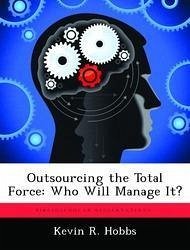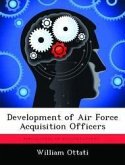After the Cold War ended, Congress pushed for significant reductions in the military force structure and the acquisition workforce. Due to acquisition reform and streamlining initiatives, the cuts in the acquisition workforce were more than that of the military in general. However, the acquisition workload did not decrease. It simply shifted from supply or hardware acquisitions supporting a large military force structure to service acquisitions augmenting a smaller military force structure. The Air Force's reliance on the private sector significantly grew to the point contractors are considered an integral part of the Total Force. Also, the amount spent on services is now more than that spent on hardware. However, there has been no corresponding shift in the way the acquisition workforce is organized or trained. Currently, the acquisition community is better postured for the acquisition of weapon systems than the acquisition and administration of services. With budgets tightening and operational demands growing, the reliance on the private sector will likely continue to increase. DoD and the Air Force have implemented many initiatives which are steps in the right direction, but the overall acquisition organization and training structure remain the same. The Air Force should take additional steps to transform the acquisition workforce to ensure they are better postured for the future. This paper explores many of these points and then provides some practical recommendations for improvement. This work has been selected by scholars as being culturally important, and is part of the knowledge base of civilization as we know it. This work was reproduced from the original artifact, and remains as true to the original work as possible. Therefore, you will see the original copyright references, library stamps (as most of these works have been housed in our most important libraries around the world), and other notations in the work. This work is in the public domain in the United States of America, and possibly other nations. Within the United States, you may freely copy and distribute this work, as no entity (individual or corporate) has a copyright on the body of the work. As a reproduction of a historical artifact, this work may contain missing or blurred pages, poor pictures, errant marks, etc. Scholars believe, and we concur, that this work is important enough to be preserved, reproduced, and made generally available to the public. We appreciate your support of the preservation process, and thank you for being an important part of keeping this knowledge alive and relevant.
Bitte wählen Sie Ihr Anliegen aus.
Rechnungen
Retourenschein anfordern
Bestellstatus
Storno








